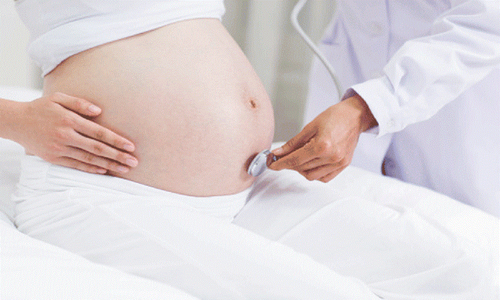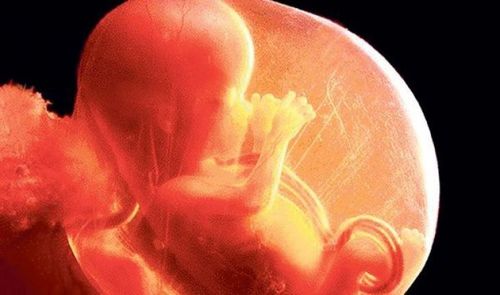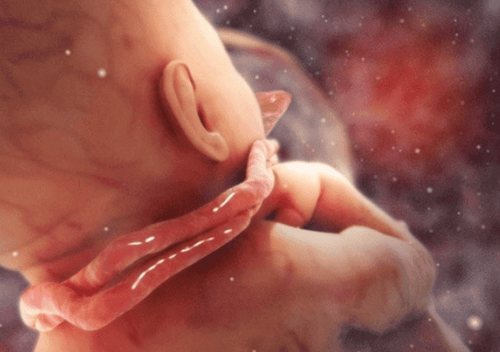This is an automatically translated article.
The article was professionally consulted by Specialist Doctor I Nguyen Thi Man - Department of Obstetrics and Gynecology - Vinmec Danang International General Hospital. The doctor has more than 10 years of experience in diagnosing, consulting and treating in the field of Obstetrics and Gynecology.Polyhydramnios is the accumulation of excess amniotic fluid beyond normal levels. Amniotic fluid plays an extremely important role for the development of the fetus, but excess amniotic fluid can have some potential risks and effects on the mother and fetus, especially at 37-39 weeks.
1. What is polyhydramnios?
Polyhydramnios is a condition in which an excess of amniotic fluid exceeds the normal amniotic value Amniotic fluid is the surrounding environment of the fetus, protecting the fetus from any impact and infection from the outside environment. The fetus swallows amniotic fluid, excretes it through the urine, and in this way controls the amount of amniotic fluid around itself. Amniotic fluid is also a medium that helps fetal lungs develop This amount of fluid will gradually increase until about 1 liter at 37 weeks. After that, the amount of amniotic fluid usually drops to about 0.5 liters by week. 40 of pregnant women. Your baby will regularly swallow amniotic fluid, which then passes out of the body as urine. This is the body's way of controlling the amount of amniotic fluid around the fetus. Once this balance is disturbed, the volume of amniotic fluid can increase rapidly, making pregnant women feel heavy and uncomfortable. To diagnose polyhydramnios, your doctor will perform an ultrasound and obtain an indirect estimate of the amniotic fluid volume. Mother was diagnosed with polyhydramnios when the amniotic fluid index (A.F.I: amniotic fluid index) on ultrasound was more than 25cm.2. What are the signs and symptoms of polyhydramnios in pregnancy?
Mild polyhydramnios is usually asymptomatic. However, each woman may experience different symptoms. Symptoms may include:The mother's abdomen is larger for her gestational age, difficulty hearing the fetal heartbeat. The measurement of the waist circumference (through the navel) is greater than 100 cm, the abdomen is tight, the abdomen is painful, breathing is difficult, eating is difficult to digest, breathing is also more difficult.

3. Consequences of polyhydramnios
3.1 Is it okay to be pregnant at 38 weeks with excess amniotic fluid? The earlier amniotic fluid occurs in pregnancy and the higher the amount of amniotic fluid, the greater the risk of complications. Over 38 weeks of amniotic fluid may appear conditions such as:premature rupture of membranes. If the amount of fluid in the uterus is too high, the mother will be at risk of premature rupture of membranes. Unusual throne. A breech delivery or other unfavorable situations for the mother Placental abruption Prolapse of the umbilical cord Fetal growth and development is restricted, and there are problems with skeletal development. To be on the safe side, the mother needs a cesarean section and therefore has an additional risk compared to a vaginal birth, possibly having postpartum infections. Does excess amniotic fluid affect the fetus? Excess amniotic fluid can lead to premature birth. The baby is born prematurely, so the organ functions are not perfect, maybe the mother will be given steroids to help the baby's lungs mature faster. Polyhydramnios carries a risk of postpartum haemorrhage.. This is because the uterus is compressed due to the large amount of amniotic fluid and cannot fully contract as usual. Is polyhydramnios dangerous? Excess amniotic fluid is the most dangerous for the fetus as it can lead to stillbirth, which is the worst case scenario. 3.2. Polyhydramnios at 37-39 weeks should be handled? Outpatient treatment
<34 weeks: Follow-up every 2 weeks, measure cervical canal length, use lung support drugs >= 34 weeks: Follow-up appointment on time or earlier if there are abnormal symptoms, super color Doppler and perform a Non-stress test every week. Hospitalization criteria
Appearance of signs of overload (difficulty breathing, abdominal pain, tachycardia...) Signs of threatened preterm birth (colic pain, bleeding,...) Polyhydramnios 39 weeks or more CTG group II or higher or abnormal color Doppler ultrasound Treat cause (if any)
Treat symptoms
Reduce amniotic fluid volume by aspiration. If there are symptoms of overload in the mother (difficulty breathing, tachycardia, abdominal pain...). Suction at <1 liter/ 20 min. The procedure may be repeated depending on the rate of amniotic fluid reabsorption.

Pregnancy from 39 weeks or more with mild to moderate polyhydramnios, Non stress test normal Pregnancy from 37 weeks or more with severe polyhydramnios 34-37 weeks pregnant with severe symptoms of maternal overload and have received fetal lung support. Vinmec International General Hospital offers a Package Maternity Care Program for pregnant women right from the first months of pregnancy with a full range of antenatal check-ups, periodical 3D and 4D ultrasounds and other routine tests to ensure that the mother is healthy and the fetus is developing comprehensively. Pregnant women will be consulted and checked for health under the close supervision of experienced and specialized obstetricians, helping mothers gain more knowledge to protect their health during pregnancy as well as minimize complications affecting mother and child.
Please dial HOTLINE for more information or register for an appointment HERE. Download MyVinmec app to make appointments faster and to manage your bookings easily.














